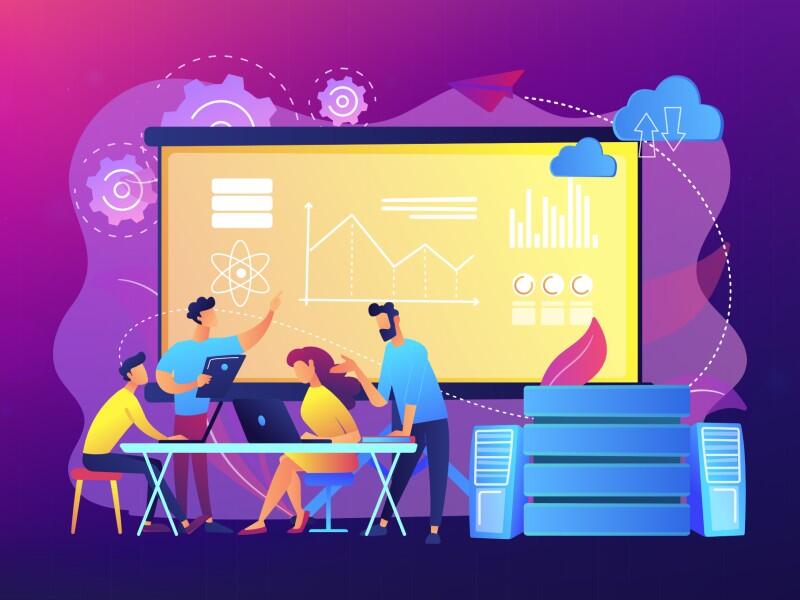Trying to explain the business benefits of technology has been an ongoing IT challenge, and it still is today for analytics. CIOs should make storytelling a top priority.

Image: Visual Generation/Shutterstock
The MIT Sloan School of Management described data storytelling as "the ability to convey data not just in numbers or charts but as a narrative that humans can comprehend." Sloan also said, "As with any good story, a data tale needs a beginning, a middle, an end and some actionable insights. Data scientists aren't always up to the job"
SEE: Electronic Data Disposal Policy (TechRepublic Premium)
IT that delivers positive business impact and that business leaders understand is an age-old IT challenge. As a liberal arts graduate student, I began my own IT career when Hughes Aircraft Company began hiring liberal arts grads instead of IT professionals to be its system analysts. Why did Hughes do this? Because it had hired a group of UCLA philosophy post-grads the year before it hired me, and the company found that these people were able to bridge the communications gap between users and more technically oriented IT professionals. The experiment worked because these liberal arts grads were able to tell a convincing business story about how technology could benefit the business.
Today we call this ability to communicate the business value of technology "data storytelling."
How do you tell an effective story that can build support for a data analytics project, and who is in the best position to do the telling?
First, there are tools that help IT tell the story. These tools fall into two camps:
- Data visualization tools that show what analytics can provide to the business by illustrating analytics on a graph, chart, map or some other visualization tool that gives management an visual picture of results
- Actual data storytelling tools that create human language explanations of what analytics reveal, without users having to read through the analytics results themselves
These tools are helpful aids to storytelling, but they can't do the entire data storytelling job by themselves.
SEE: Why plot-driven data storytelling is important and how to create it (TechRepublic)
For this task, organizations need talented individuals who are strong communicators and who possess both business acumen and IT savvy. In an IT department, you are most likely to find these individuals in the positions of business analysts, and many of them (as in the past) will be capable communicators who hail from liberal arts backgrounds.
In the Sloan paper, Miro Kazakoff, an MIT Sloan lecturer who teaches communications and data storytelling as part of the school's Masters of Business Analytics curriculum, explained: "Would-be data storytellers are coached to anticipate an audience's likely response to analysis," Kazakoff said. "Students learn to structure their planning and presentation to address the needs of a specific audience—whether it's a colleague, a customer or a boss—so they're able to take away the right insights and initiate appropriate action.
That's not always possible with common analytics dashboards that simply alert business users to a specific change—say, a dip in sales or a spike in customer support calls—without providing insight into the entire story.
SEE: Snowflake data warehouse platform: A cheat sheet (free PDF) (TechRepublic)
"If you want people to make the right decisions with data, you have to get in their head in a way they understand. Throughout human history, the way to do that has been with stories," Kazakoff said in the Sloan paper.
With research firms like Gartner predicting that only 20% of analytics projects will deliver business outcomes, it's imperative that IT leaders find and develop business analysts who grasp the salient points of both IT and the business and who can cut to the chase of what really matters for company revenue, cost savings, customer satisfaction, brand building and other strategic concerns. These people can be culled from internal user and IT ranks or brought in from the outside—and developing them should be a top CIO priority for the foreseeable future.

Data, Analytics and AI Newsletter
Learn the latest news and best practices about data science, big data analytics, and artificial intelligence. Delivered Mondays
Sign up todayAlso see
- Geospatial data is being used to help track pandemics and emergencies (TechRepublic)
- Akamai boosts traffic by 350% but keeps energy use flat thanks to edge computing (TechRepublic)
- How to become a data scientist: A cheat sheet (TechRepublic)
- Top 5 programming languages data admins should know (free PDF) (TechRepublic download)
- Data Encryption Policy (TechRepublic Premium)
- Volume, velocity, and variety: Understanding the three V's of big data (ZDNet)
- Big data: More must-read coverage (TechRepublic on Flipboard)







 English (US) ·
English (US) ·